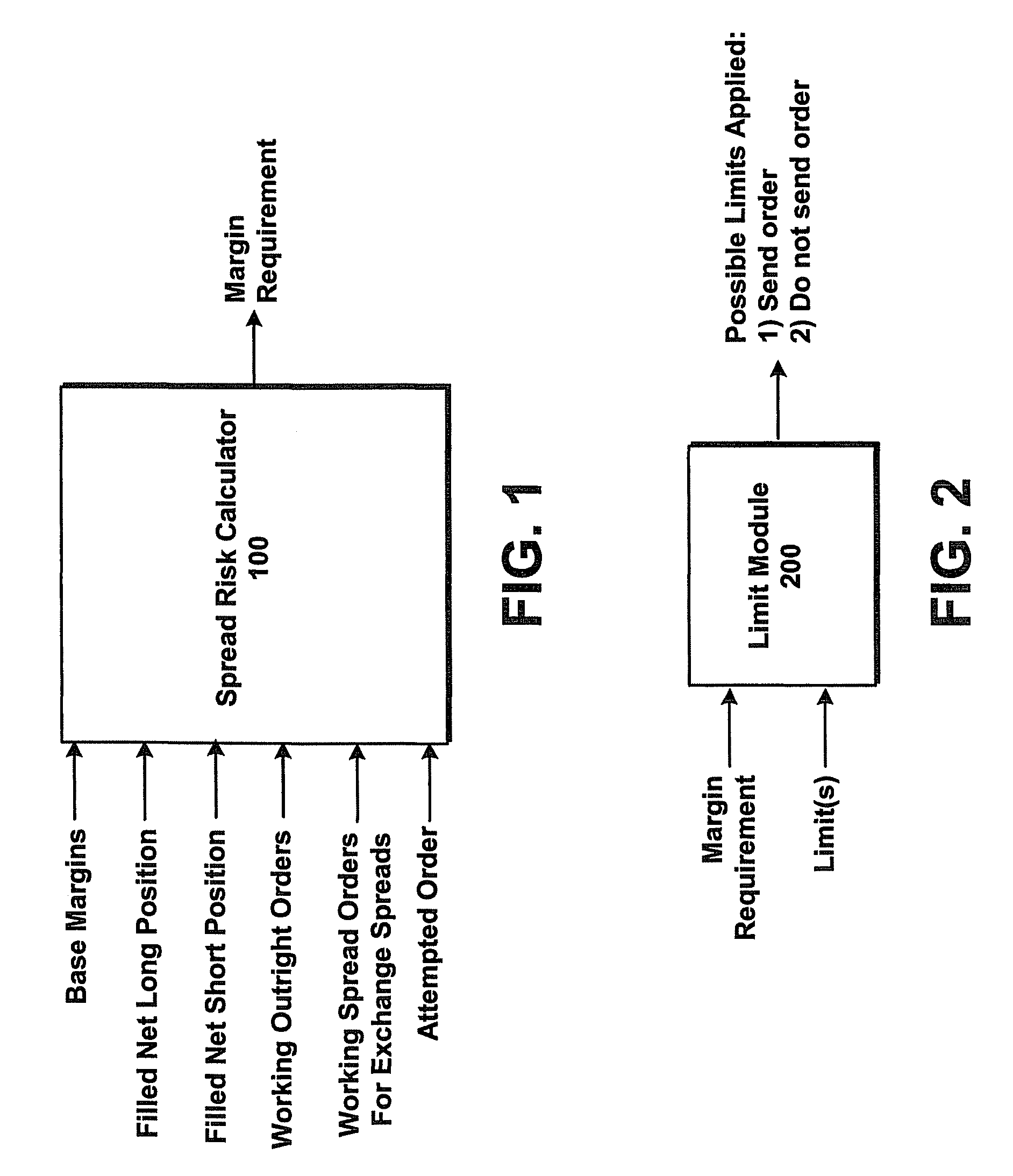System and method for risk management
a risk management and risk management technology, applied in the field of electronic exchanges, can solve the problems of affecting the balance in the margin account of the trader, affecting the margin requirement of the trader, and not necessarily remaining fixed,
- Summary
- Abstract
- Description
- Claims
- Application Information
AI Technical Summary
Benefits of technology
Problems solved by technology
Method used
Image
Examples
example 1
A. EXAMPLE 1
[0070]FIG. 5 shows a working buy order placed in an outright market for March. Once the order is placed (note that the order could be an attempted order), the maximum outright position changes to “1.” The maximum outright position would occur if the order fills, thereby generating a one outright position for the trader. Note that the outright value is “0,” because the buy order is still working and has not yet been filled. Thus, while the order is pending the trader has no outright positions. The O-Margin position is 100*1=100. The total position is 0+100=100. The total position represents the margin requirement of “100.” If the working buy order was an attempted order, the preferred system could determine based on the margin requirement and the available margin balance as to whether the order could be forwarded to an exchange.
example 2
B. EXAMPLE 2
[0071]FIG. 6 shows the same working buy order placed in FIG. 5, and in addition it shows a working sell order placed in an outright market for June. After placing the sell order, the trader still has no outrights because neither order has yet to be filled. Thus, the outrights value remains at 0. The maximum outrights also remains 1, which would occur if either the buy order or the sell order were filled thereby generating either a net long or a net short position (depending on which order fills) for the trader.
[0072]If both the buy order and the sell order were to fill, the trader would seemingly have two outrights. This would not be the case, however, because if both orders filled then the trader would hold a net long position in one month and a net short position in another month. The two outright positions would combine to form a spread, with one leg of the spread being the March buy order and the second leg of the spread being the June sell order. Although both are h...
example 3
C. EXAMPLE 3
[0073]FIG. 7 shows that the working buy order placed in FIG. 5 has been filled and the working sell order placed in FIG. 6 remains in the market. The outrights value now becomes “1,” because the buy order filled and the trader now holds one outright position. The maximum outrights remains “1.” As previously described, the maximum outrights for this example occurs if either the buy order or the sell order fills, thereby generating one outright for the trader. If both orders fill, the two would combine to form a spread instead of two outright positions.
[0074]The maximum leg position for March becomes “1.” Note, however, that the maximum leg position for June remains at “0.” The margin requirement remains at “100.”
PUM
 Login to View More
Login to View More Abstract
Description
Claims
Application Information
 Login to View More
Login to View More - R&D
- Intellectual Property
- Life Sciences
- Materials
- Tech Scout
- Unparalleled Data Quality
- Higher Quality Content
- 60% Fewer Hallucinations
Browse by: Latest US Patents, China's latest patents, Technical Efficacy Thesaurus, Application Domain, Technology Topic, Popular Technical Reports.
© 2025 PatSnap. All rights reserved.Legal|Privacy policy|Modern Slavery Act Transparency Statement|Sitemap|About US| Contact US: help@patsnap.com



